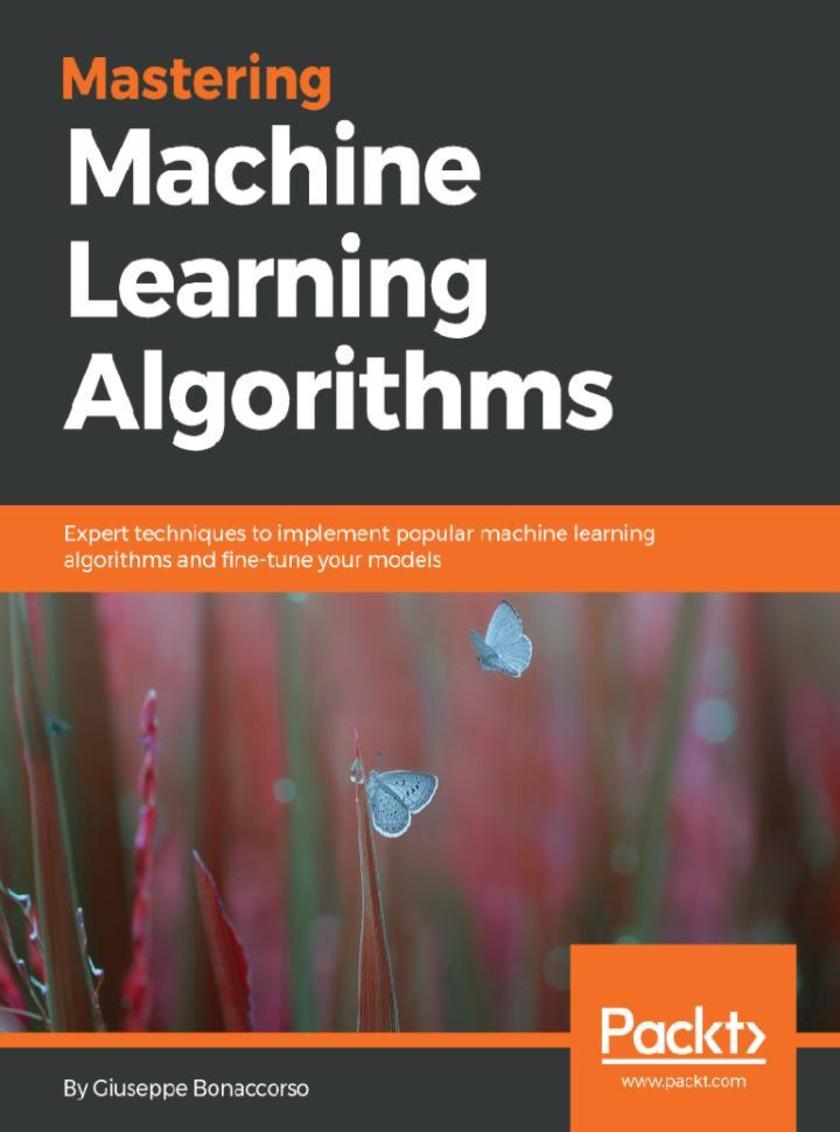
Mastering Machine Learning Algorithms
¥81.74
Explore and master the most important algorithms for solving complex machine learning problems. About This Book ? Discover high-performing machine learning algorithms and understand how they work in depth. ? One-stop solution to mastering supervised, unsupervised, and semi-supervised machine learning algorithms and their implementation. ? Master concepts related to algorithm tuning, parameter optimization, and more Who This Book Is For This book is an ideal and relevant source of content for data science professionals who want to delve into complex machine learning algorithms, calibrate models, and improve the predictions of the trained model. A basic knowledge of machine learning is preferred to get the best out of this guide. What You Will Learn ? Explore how a ML model can be trained, optimized, and evaluated ? Understand how to create and learn static and dynamic probabilistic models ? Successfully cluster high-dimensional data and evaluate model accuracy ? Discover how artificial neural networks work and how to train, optimize, and validate them ? Work with Autoencoders and Generative Adversarial Networks ? Apply label spreading and propagation to large datasets ? Explore the most important Reinforcement Learning techniques In Detail Machine learning is a subset of AI that aims to make modern-day computer systems smarter and more intelligent. The real power of machine learning resides in its algorithms, which make even the most difficult things capable of being handled by machines. However, with the advancement in the technology and requirements of data, machines will have to be smarter than they are today to meet the overwhelming data needs; mastering these algorithms and using them optimally is the need of the hour. Mastering Machine Learning Algorithms is your complete guide to quickly getting to grips with popular machine learning algorithms. You will be introduced to the most widely used algorithms in supervised, unsupervised, and semi-supervised machine learning, and will learn how to use them in the best possible manner. Ranging from Bayesian models to the MCMC algorithm to Hidden Markov models, this book will teach you how to extract features from your dataset and perform dimensionality reduction by making use of Python-based libraries such as scikit-learn. You will also learn how to use Keras and TensorFlow to train effective neural networks. If you are looking for a single resource to study, implement, and solve end-to-end machine learning problems and use-cases, this is the book you need. Style and approach A hands-on guide filled with real-world examples of popular algorithms used for data science and machine learning
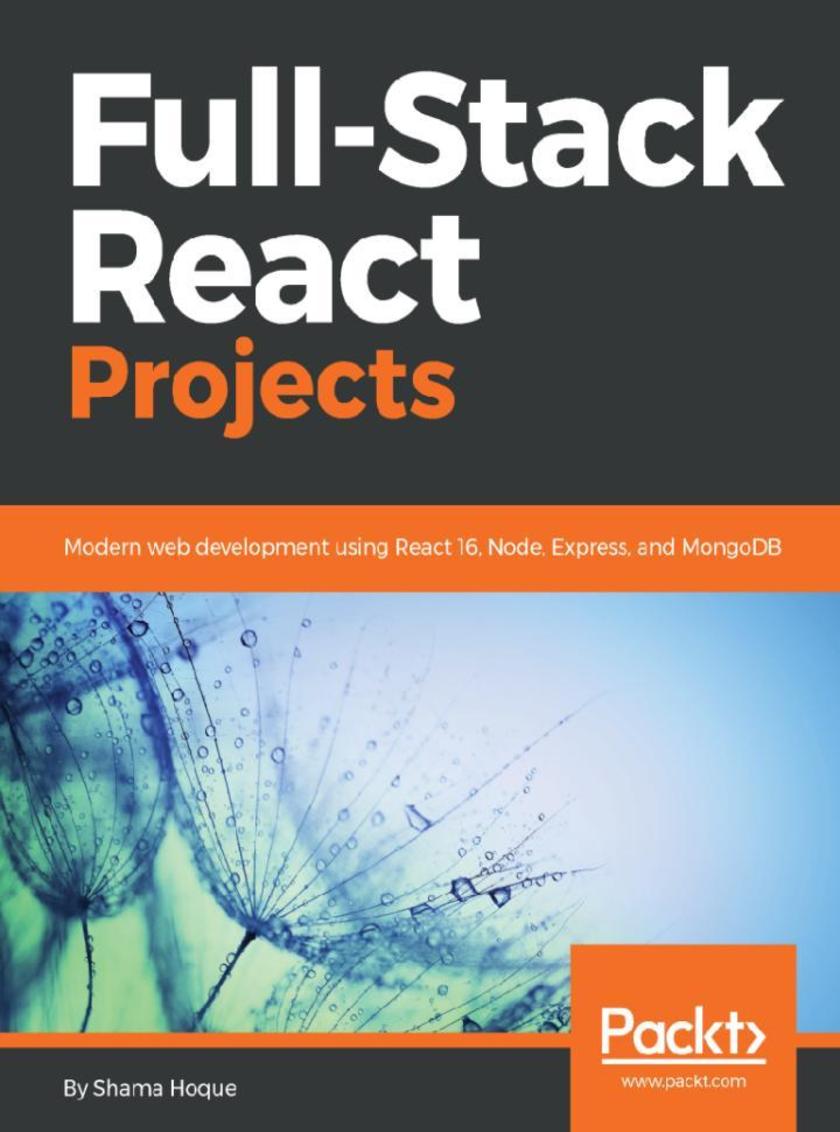
Full-Stack React Projects
¥81.74
Unleash the power of MERN stack by building diverse web applications using React, Node.js, Express, and MongoDB About This Book ? Create dynamic web applications with the MERN stack ? Leverage the power of React in building interactive and complex user interfaces ? Unlock the potential of Node, Express, and MongoDB to build modern full-stack applications Who This Book Is For Full-Stack React Web Development Projects is for JavaScript developers who have some experience with React, but no previous experience with full-stack development involving Node, Express, and MongoDB, and who want practical guidelines to start building different types of real-world web applications with this stack. What You Will Learn ? Set up your development environment and develop a MERN application ? Implement user authentication and authorization using JSON Web Tokens ? Build a social media application by extending the basic MERN application ? Create an online marketplace application with shopping cart and Stripe payments ? Develop a media streaming application using MongoDB GridFS ? Implement server-side rendering with data to improve SEO ? Set up and use React 360 to develop user interfaces with VR capabilities ? Learn industry best practices to make MERN stack applications reliable and scalable In Detail The benefits of using a full JavaScript stack for web development are undeniable, especially when robust and widely adopted technologies such as React, Node, and Express and are available. Combining the power of React with industry-tested, server-side technologies, such as Node, Express, and MongoDB, creates a diverse array of possibilities when developing real-world web applications. This book guides you through preparing the development environment for MERN stack-based web development, to creating a basic skeleton application and extending it to build four different web applications. These applications include a social media, an online marketplace, a media streaming, and a web-based game application with virtual reality features. While learning to set up the stack and developing a diverse range of applications with this book, you will grasp the inner workings of the MERN stack, extend its capabilities for complex features, and gain actionable knowledge of how to prepare MERN-based applications to meet the growing demands of real-world web applications. Style and approach This book provides practical guidelines on setting up and building MERN stack based applications, while providing further explanations on key concepts and implementations.
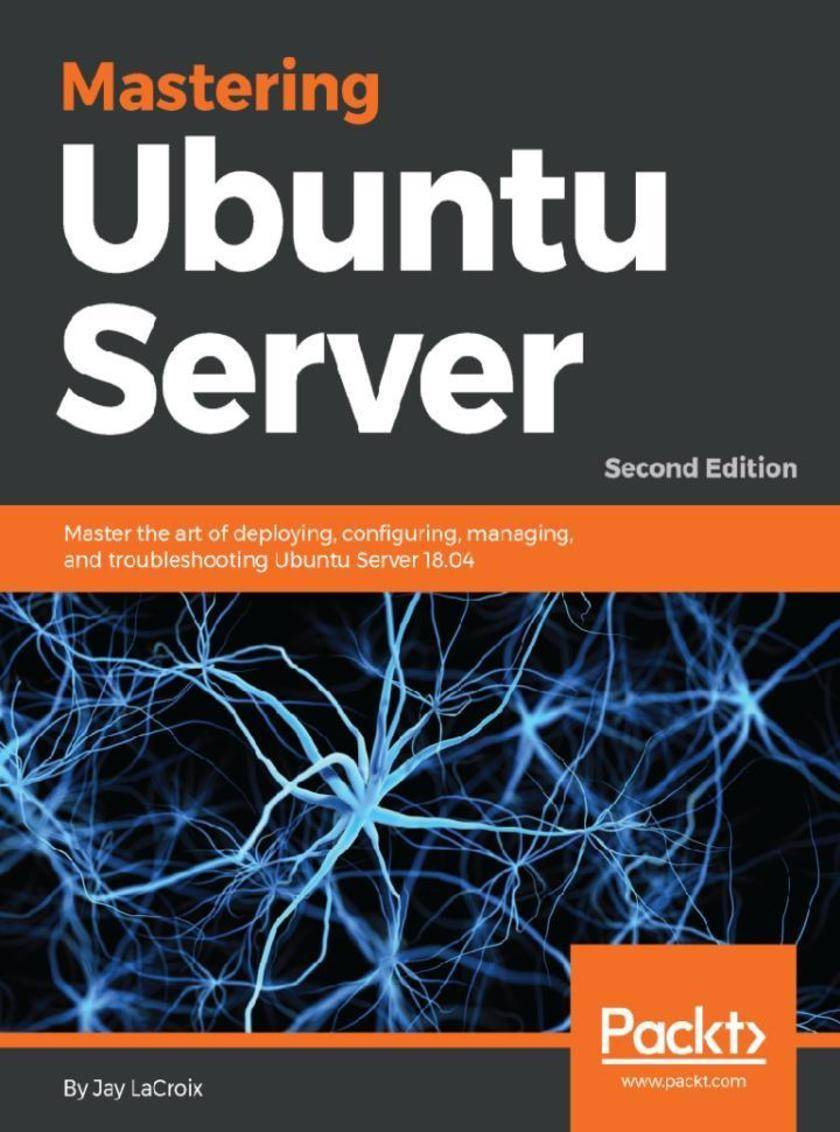
Mastering Ubuntu Server
¥81.74
Get up-to-date with the finer points of Ubuntu Server using this comprehensive guide About This Book ? A practical easy-to-understand book that will teach you how to deploy, maintain and troubleshoot Ubuntu Server ? Get well-versed with newly-added features in Ubuntu 18.04. ? Learn to manage cutting-edge technologies such as virtualization, containers, Nextcloud and more Who This Book Is For This book is intended for readers with intermediate or advanced-beginner skills with Linux, who would like to learn all about setting up servers with Ubuntu Server. This book assumes that the reader knows the basics of Linux, such as editing configuration files and running basic commands. What You Will Learn ? Manage users, groups, and permissions ? Encrypt and decrypt disks with Linux Unified Key Setup (LUKS) ? Set up SSH for remote access, and connect it to other nodes ? Add, remove, and search for packages ? Use NFS and Samba to share directories with other users ? Get to know techniques for managing Apache and MariaDB ? Explore best practices and troubleshooting techniques ? Get familiar with scripting ? Automate server deployments with Ansible In Detail Ubuntu Server has taken the data centers by storm. Whether you're deploying Ubuntu for a large-scale project or for a small office, it is a stable, customizable, and powerful Linux distribution that leads the way with innovative and cutting-edge features. For both simple and complex server deployments, Ubuntu's flexible nature can be easily adapted to meet to the needs of your organization. With this book as your guide, you will learn all about Ubuntu Server, from initial deployment to creating production-ready resources for your network. The book begins with the concept of user management, group management, and filesystem permissions. Continuing into managing storage volumes, you will learn how to format storage devices, utilize logical volume management, and monitor disk usage. Later, you will learn how to virtualize hosts and applications, which will cover setting up KVM/QEMU, as well as containerization with both Docker and LXD. As the book continues, you will learn how to automate configuration with Ansible, as well as take a look at writing scripts. Lastly, you will explore best practices and troubleshooting techniques when working with Ubuntu Server that are applicable to real-world scenarios. By the end of the book, you will be an expert Ubuntu Server administrator who is well-versed in its advanced concepts. Style and approach This book is an advanced guide that will show readers how to administer, manage, and deploy Ubuntu server and will also provide expert-level knowledge on advanced security and backup techniques.
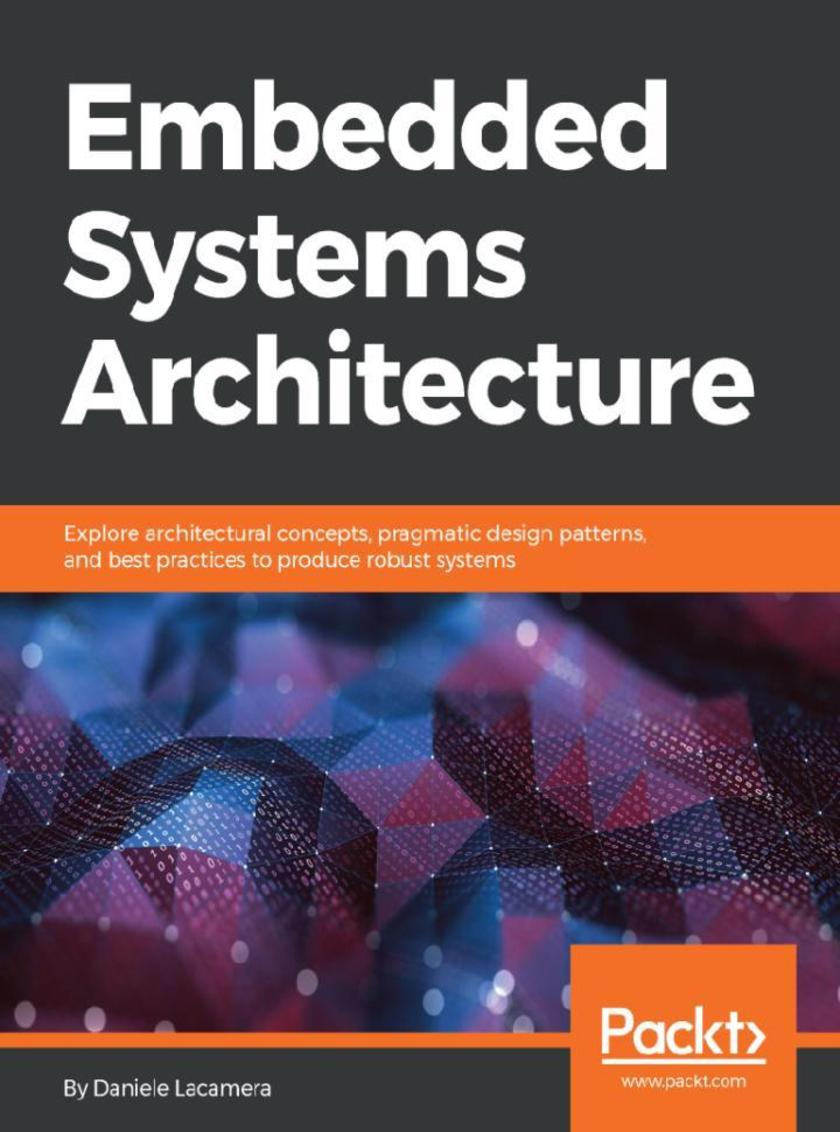
Embedded Systems Architecture
¥81.74
Learn to design and develop safe and reliable embedded systems About This Book ? Identify and overcome challenges in embedded environments ? Understand the steps required to increase the security of IoT solutions ? Build safety-critical and memory-safe parallel and distributed embedded systems Who This Book Is For If you’re a software developer or designer wanting to learn about embedded programming, this is the book for you. You’ll also find this book useful if you’re a less experienced embedded programmer willing to expand your knowledge. What You Will Learn ? Participate in the design and definition phase of an embedded product ? Get to grips with writing code for ARM Cortex-M microcontrollers ? Build an embedded development lab and optimize the workflow ? Write memory-safe code ? Understand the architecture behind the communication interfaces ? Understand the design and development patterns for connected and distributed devices in the IoT ? Master multitask parallel execution patterns and real-time operating systems In Detail Embedded systems are self-contained devices with a dedicated purpose. We come across a variety of fields of applications for embedded systems in industries such as automotive, telecommunications, healthcare and consumer electronics, just to name a few. Embedded Systems Architecture begins with a bird's eye view of embedded development and how it differs from the other systems that you may be familiar with. You will first be guided to set up an optimal development environment, then move on to software tools and methodologies to improve the work flow. You will explore the boot-up mechanisms and the memory management strategies typical of a real-time embedded system. Through the analysis of the programming interface of the reference microcontroller, you'll look at the implementation of the features and the device drivers. Next, you'll learn about the techniques used to reduce power consumption. Then you will be introduced to the technologies, protocols and security aspects related to integrating the system into IoT solutions. By the end of the book, you will have explored various aspects of embedded architecture, including task synchronization in a multi-threading environment, and the safety models adopted by modern real-time operating systems. Style and approach Software developers and designers with experience in different fields, and who want to learn about embedded programming, will benefit from this book. Junior and less experienced embedded programmers willing to expand their knowledge in the field will also find it useful.
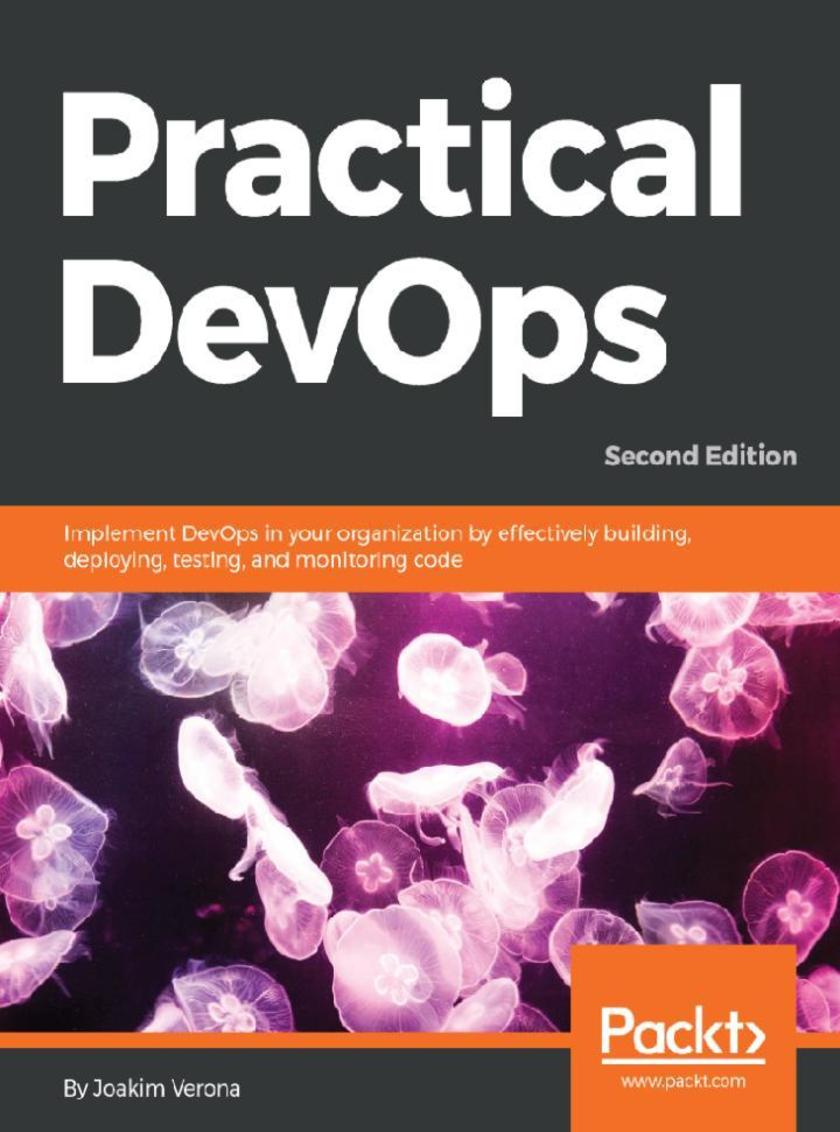
Practical DevOps
¥81.74
Understand the benefits of DevOps and continuous delivery and see how they support the agile software development process About This Book ? Learn how DevOps can accelerate your entire software development life cycle ? Improve your organization's performance to ensure the smooth production of software and services ? Get hands-on experience in using efficient DevOps tools to better effect Who This Book Is For If you're a developer or system administrator looking to take on larger responsibilities and understand how the infrastructure that builds today's enterprises works, this is the book for you. This book will also help you greatly if you're an operations worker who would like to better support developers. You do not need any previous knowledge of DevOps to understand the concepts in this book. What You Will Learn ? Understand how all deployment systems fit together to form a larger system ? Set up and familiarize yourself with all the tools you need to be efficient with DevOps ? Design an application suitable for continuous deployment systems with DevOps in mind ? Store and manage your code effectively using Git, Gerrit, Gitlab, and more ? Configure a job to build a sample CRUD application ? Test your code using automated regression testing with Jenkins Selenium ? Deploy your code using tools such as Puppet, Ansible, Palletops, Chef, and Vagrant In Detail DevOps is a practical field that focuses on delivering business value as efficiently as possible. DevOps encompasses all code workflows from testing environments to production environments. It stresses cooperation between different roles, and how they can work together more closely, as the roots of the word imply—Development and Operations. Practical DevOps begins with a quick refresher on DevOps and continuous delivery and quickly moves on to show you how DevOps affects software architectures. You'll create a sample enterprise Java application that you’'ll continue to work with through the remaining chapters. Following this, you will explore various code storage and build server options. You will then learn how to test your code with a few tools and deploy your test successfully. In addition to this, you will also see how to monitor code for any anomalies and make sure that it runs as expected. Finally, you will discover how to handle logs and keep track of the issues that affect different processes. By the end of the book, you will be familiar with all the tools needed to deploy, integrate, and deliver efficiently with DevOps. Style and approach This book is primarily a technical guide to DevOps with practical examples suitable for people who like to learn by implementing concrete working code.
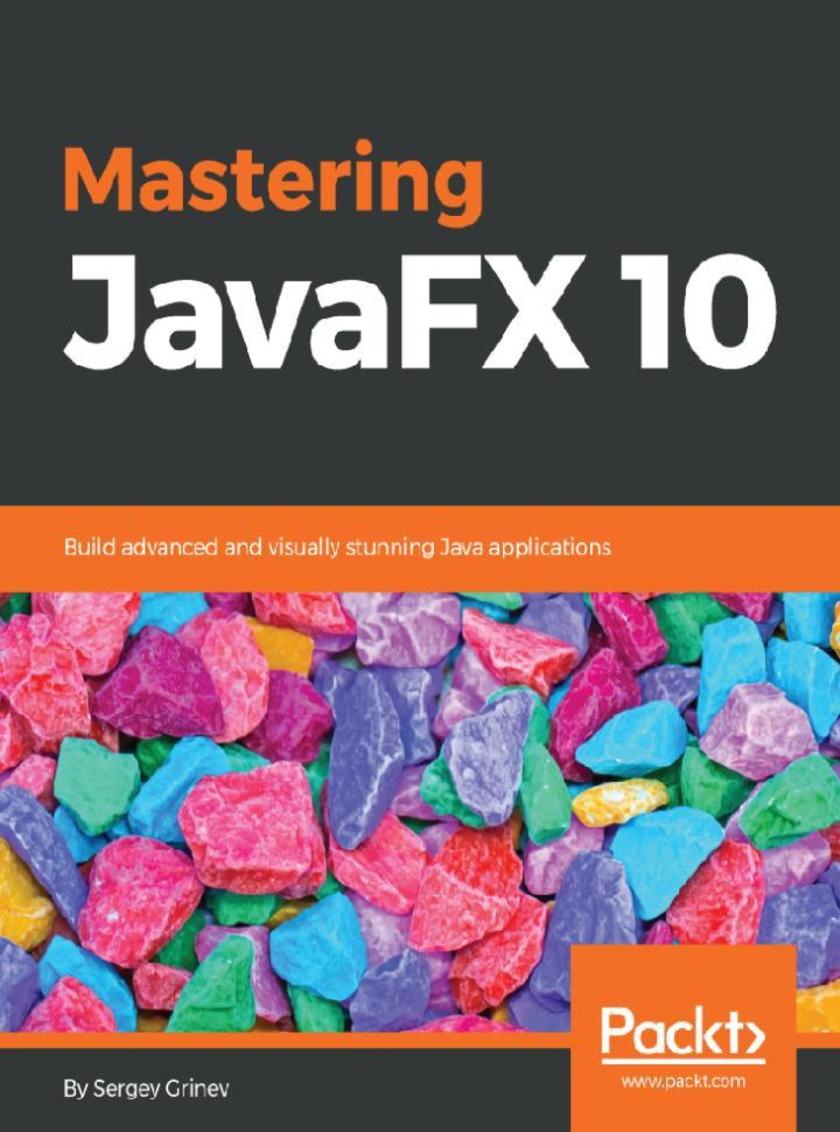
Mastering JavaFX 10
¥81.74
Design modern, rich interfaces for Java apps using JavaFX 10 About This Book ? Become a pro with the latest JavaFX 10 framework ? Create dynamic content using the animation API ? Create and customize plugins and use them efficiently in different applications Who This Book Is For If you’re a Java developer who wants to upgrade to the latest version of JavaFX to create stunning, feature-rich graphical applications, this book is for you. What You Will Learn ? Construct and customize JavaFX windows ? Manage UI elements and arrange them on the Scene ? Explore the Bindings API and use it to coordinate various UI elements ? Use FXML to design amazing FX applications ? Write and manage CSS to style your applications ? Add audio and video to your projects ? Prepare your application to be launched on the target platform In Detail JavaFX 10 is used to create media-rich client applications. This book takes you on a journey to use JavaFX 10 to build applications that display information in a high-performance, modern user interface featuring audio, video, graphics, and animation. Mastering JavaFX 10 begins by introducing you to the JavaFX API. You will understand the steps involved in setting up your development environment and build the necessary dependencies. This is followed by exploring how to work with the assets, modules, and APIs of JavaFX. This book is filled with practical examples to guide you through the major features of JavaFX 10. In addition to this, you will acquire a practical understanding of JavaFX custom animations, merging different application layers smoothly, and creating a user-friendly GUI with ease. By the end of the book, you will be able to create a complete, feature-rich Java graphical application using JavaFX. Style and approach The book adopts a practical, step-by-step approach.
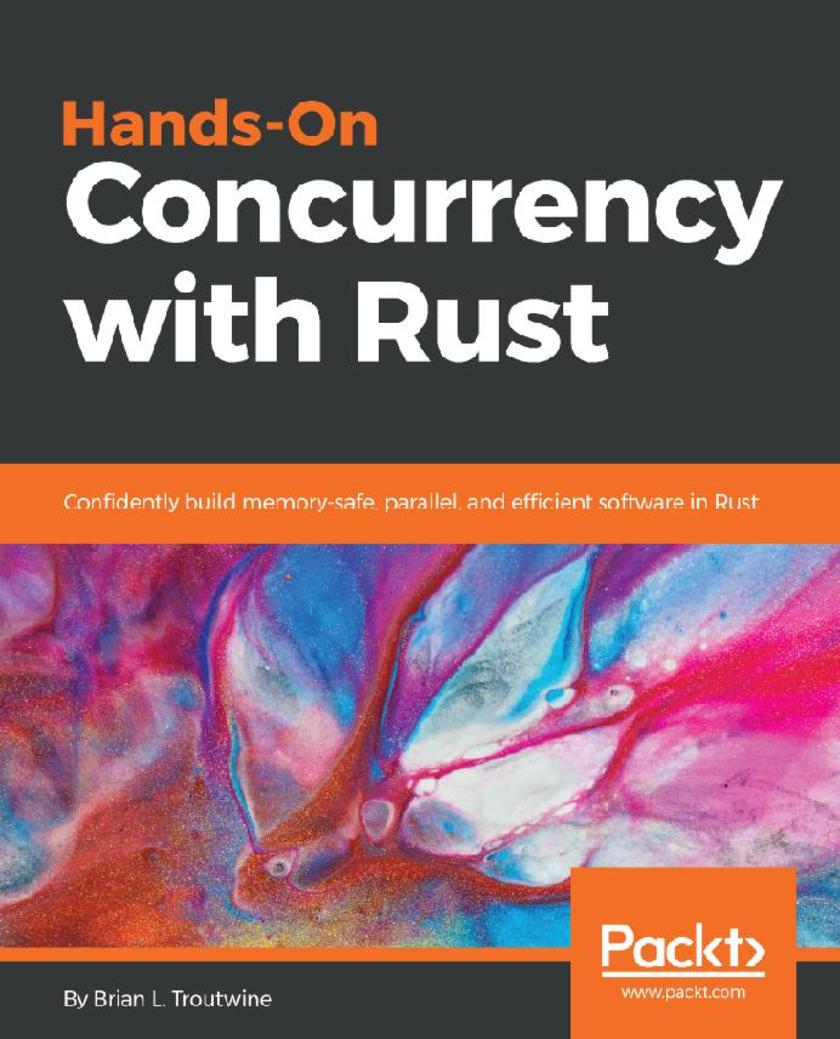
Hands-On Concurrency with Rust
¥81.74
Get to grips with modern software demands by learning the effective uses of Rust's powerful memory safety. About This Book ? Learn and improve the sequential performance characteristics of your software ? Understand the use of operating system processes in a high-scale concurrent system ? Learn of the various coordination methods available in the Standard library Who This Book Is For This book is aimed at software engineers with a basic understanding of Rust who want to exploit the parallel and concurrent nature of modern computing environments, safely. What You Will Learn ? Probe your programs for performance and accuracy issues ? Create your own threading and multi-processing environment in Rust ? Use coarse locks from Rust’s Standard library ? Solve common synchronization problems or avoid synchronization using atomic programming ? Build lock-free/wait-free structures in Rust and understand their implementations in the crates ecosystem ? Leverage Rust’s memory model and type system to build safety properties into your parallel programs ? Understand the new features of the Rust programming language to ease the writing of parallel programs In Detail Most programming languages can really complicate things, especially with regard to unsafe memory access. The burden on you, the programmer, lies across two domains: understanding the modern machine and your language's pain-points. This book will teach you to how to manage program performance on modern machines and build fast, memory-safe, and concurrent software in Rust. It starts with the fundamentals of Rust and discusses machine architecture concepts. You will be taken through ways to measure and improve the performance of Rust code systematically and how to write collections with confidence. You will learn about the Sync and Send traits applied to threads, and coordinate thread execution with locks, atomic primitives, data-parallelism, and more. The book will show you how to efficiently embed Rust in C++ code and explore the functionalities of various crates for multithreaded applications. It explores implementations in depth. You will know how a mutex works and build several yourself. You will master radically different approaches that exist in the ecosystem for structuring and managing high-scale systems. By the end of the book, you will feel comfortable with designing safe, consistent, parallel, and high-performance applications in Rust. Style and approach Readers will be taken through various ways to improve the performance of their Rust code.
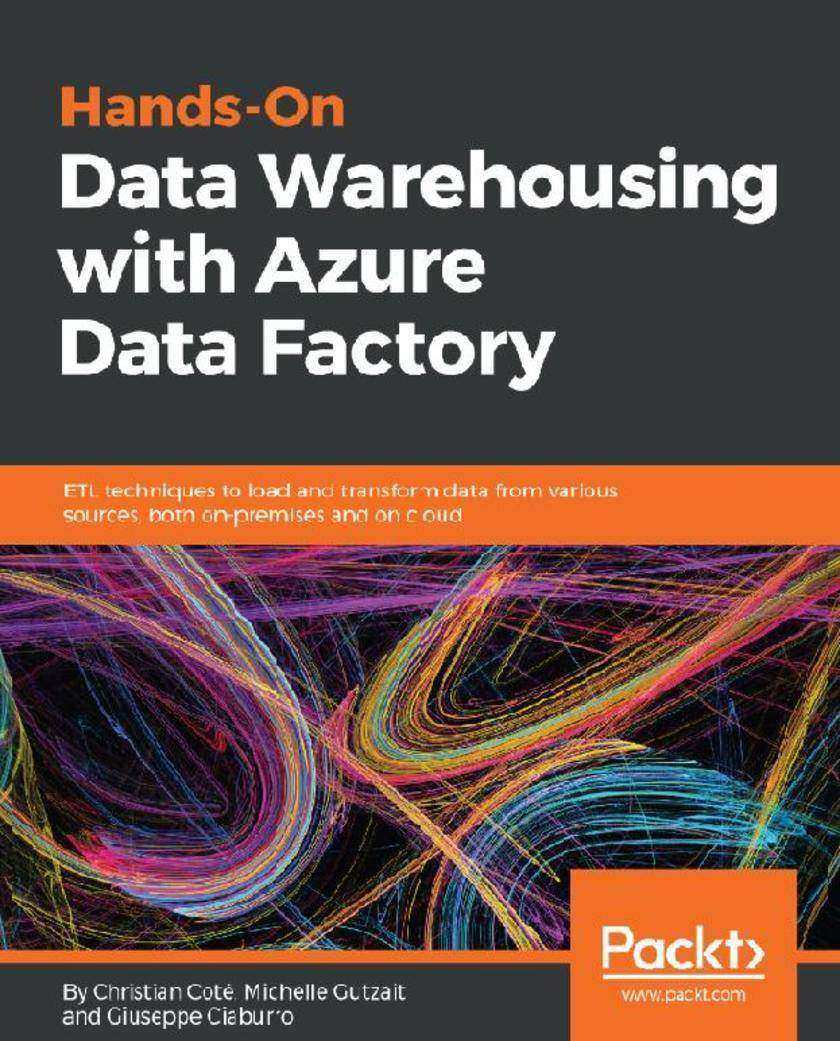
Hands-On Data Warehousing with Azure Data Factory
¥81.74
Leverage the power of Microsoft Azure Data Factory v2 to build hybrid data solutions About This Book ? Combine the power of Azure Data Factory v2 and SQL Server Integration Services ? Design and enhance performance and scalability of a modern ETL hybrid solution ? Interact with the loaded data in data warehouse and data lake using Power BI Who This Book Is For This book is for you if you are a software professional who develops and implements ETL solutions using Microsoft SQL Server or Azure cloud. It will be an added advantage if you are a software engineer, DW/ETL architect, or ETL developer, and know how to create a new ETL implementation or enhance an existing one with ADF or SSIS. What You Will Learn ? Understand the key components of an ETL solution using Azure Data Factory and Integration Services ? Design the architecture of a modern ETL hybrid solution ? Implement ETL solutions for both on-premises and Azure data ? Improve the performance and scalability of your ETL solution ? Gain thorough knowledge of new capabilities and features added to Azure Data Factory and Integration Services In Detail ETL is one of the essential techniques in data processing. Given data is everywhere, ETL will always be the vital process to handle data from different sources. Hands-On Data Warehousing with Azure Data Factory starts with the basic concepts of data warehousing and ETL process. You will learn how Azure Data Factory and SSIS can be used to understand the key components of an ETL solution. You will go through different services offered by Azure that can be used by ADF and SSIS, such as Azure Data Lake Analytics, Machine Learning and Databrick’s Spark with the help of practical examples. You will explore how to design and implement ETL hybrid solutions using different integration services with a step-by-step approach. Once you get to grips with all this, you will use Power BI to interact with data coming from different sources in order to reveal valuable insights. By the end of this book, you will not only learn how to build your own ETL solutions but also address the key challenges that are faced while building them. Style and approach A step-by-step guide to develop data movement code using SSIS, Azure Data Factory, and database stored procedures for implementing intelligent BI solutions.
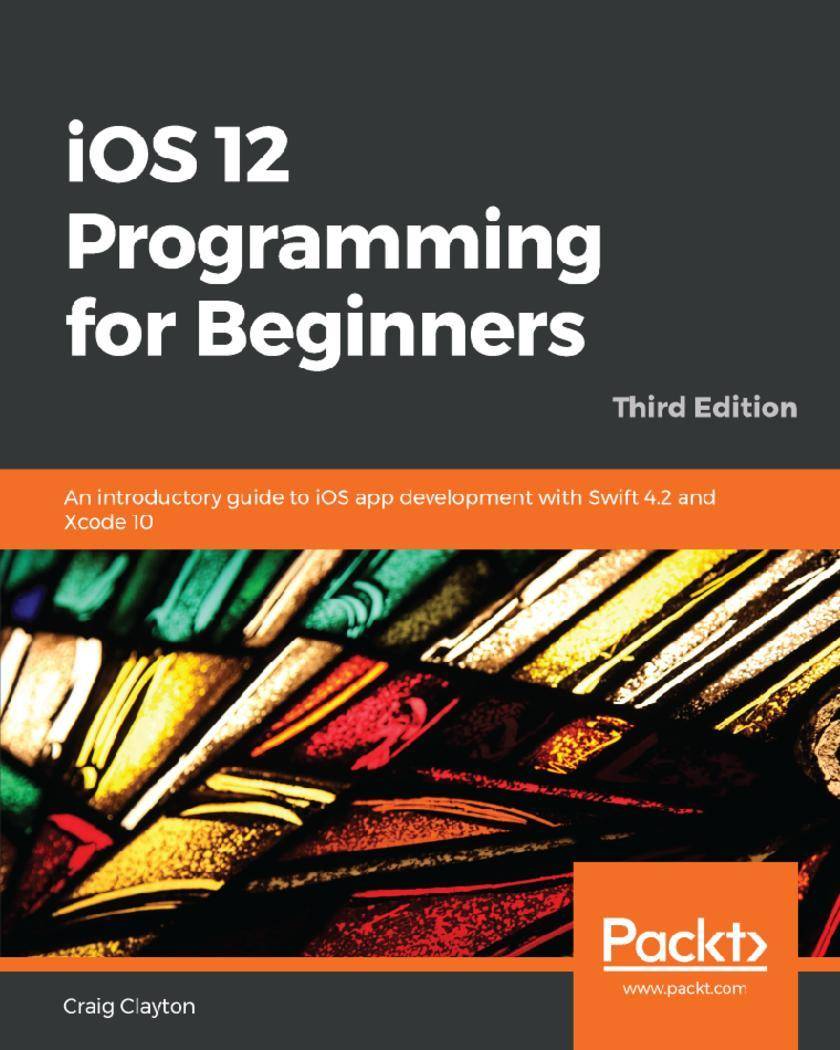
iOS 12 Programming for Beginners
¥81.74
Begin your iOS 12 app development journey with this practical guide Key Features *Kick-start your iOS programming career and have fun building iOS apps of your choice *Get to grips with Xcode 10 and Swift 4.2, the building blocks of iOS development *Discover the latest features of iOS 12 - SiriKit, notifications, and much more Book Description Want to build iOS 12 applications from scratch with the latest Swift 4.2 language and Xcode 10 by your side? Forget sifting through tutorials and blog posts; this book is a direct route to iOS development, taking you through the basics and showing you how to put principles into practice. Take advantage of this developer-friendly guide and start building applications that may just take the App Store by storm! If you’re already an experienced programmer, you can jump right in and learn the latest iOS 12 features. For beginners, this book starts by introducing you to iOS development as you learn Xcode and Swift. You'll also study advanced iOS design topics, such as gestures and animations, to give your app the edge. You’ll explore the latest Swift 4.2 and iOS 12 developments by incorporating new features, such as the latest in notifications, custom-UI notifications, maps, and the recent additions in Sirikit. The book will guide you in using TestFlight to quickly get to grips with everything you need to get your project on the App Store. By the end of this book, you'll be ready to start building your own cool iOS applications confidently. What you will learn *Explore the distinctive design principles that define the iOS user experience *Navigate panels within an Xcode project *Use the latest Xcode asset catalogue of Xcode 10 *Create a playgrounds project within your projects and understand how Ranges and Control flow work *Study operations with integers and work your way through if statements *Build a responsive UI and add privacy to your custom-rich notifications *Set up Sirikit to add voice for Siri shortcuts *Collect valuable feedback with TestFlight before releasing your apps on the App Store Who this book is for This book is for you if you are completely new to Swift, iOS, or programming and want to make iOS applications. However, you’ll also find this book useful if you’re an experienced programmer looking to explore the latest iOS 12 features.
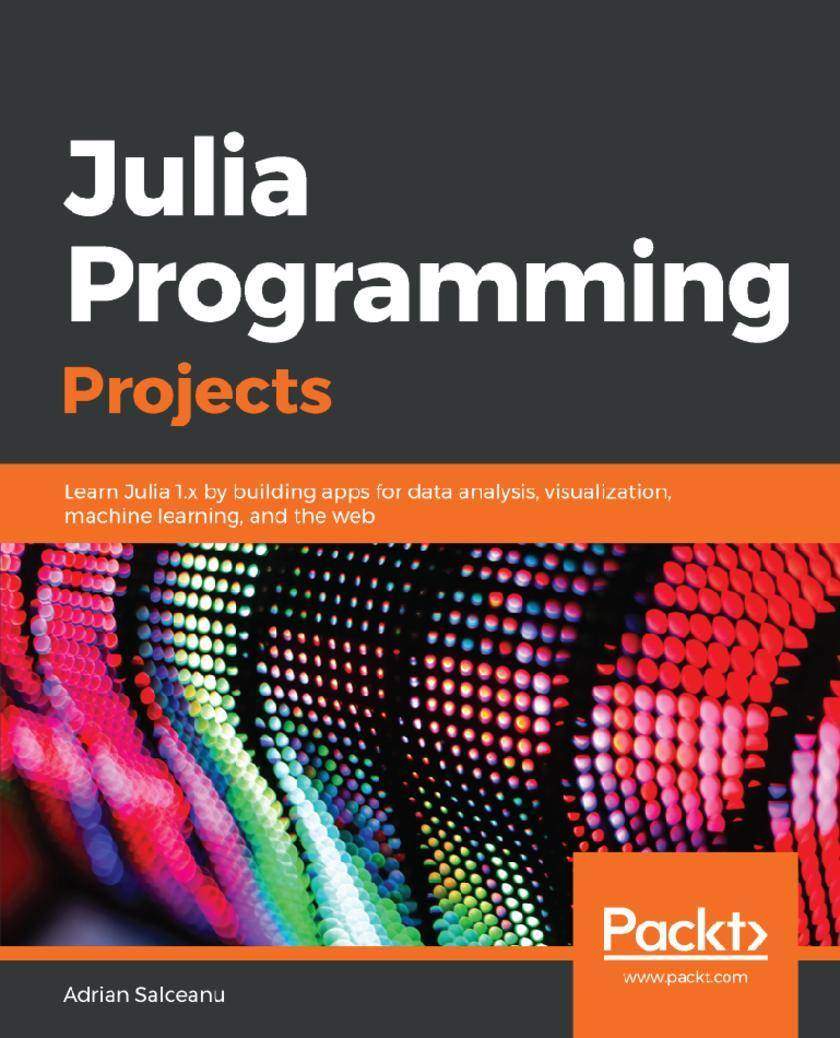
Julia Programming Projects
¥81.74
A step-by-step guide that demonstrates how to build simple-to-advanced applications through examples in Julia Lang 1.x using modern tools Key Features *Work with powerful open-source libraries for data wrangling, analysis, and visualization *Develop full-featured, full-stack web applications *Learn to perform supervised and unsupervised machine learning and time series analysis with Julia Book Description Julia is a new programming language that offers a unique combination of performance and productivity. Its powerful features, friendly syntax, and speed are attracting a growing number of adopters from Python, R, and Matlab, effectively raising the bar for modern general and scientific computing. After six years in the making, Julia has reached version 1.0. Now is the perfect time to learn it, due to its large-scale adoption across a wide range of domains, including fintech, biotech, education, and AI. Beginning with an introduction to the language, Julia Programming Projects goes on to illustrate how to analyze the Iris dataset using DataFrames. You will explore functions and the type system, methods, and multiple dispatch while building a web scraper and a web app. Next, you'll delve into machine learning, where you'll build a books recommender system. You will also see how to apply unsupervised machine learning to perform clustering on the San Francisco business database. After metaprogramming, the final chapters will discuss dates and time, time series analysis, visualization, and forecasting. We'll close with package development, documenting, testing and benchmarking. By the end of the book, you will have gained the practical knowledge to build real-world applications in Julia. What you will learn *Leverage Julia's strengths, its top packages, and main IDE options *Analyze and manipulate datasets using Julia and DataFrames *Write complex code while building real-life Julia applications *Develop and run a web app using Julia and the HTTP package *Build a recommender system using supervised machine learning *Perform exploratory data analysis *Apply unsupervised machine learning algorithms *Perform time series data analysis, visualization, and forecasting Who this book is for Data scientists, statisticians, business analysts, and developers who are interested in learning how to use Julia to crunch numbers, analyze data and build apps will find this book useful. A basic knowledge of programming is assumed.
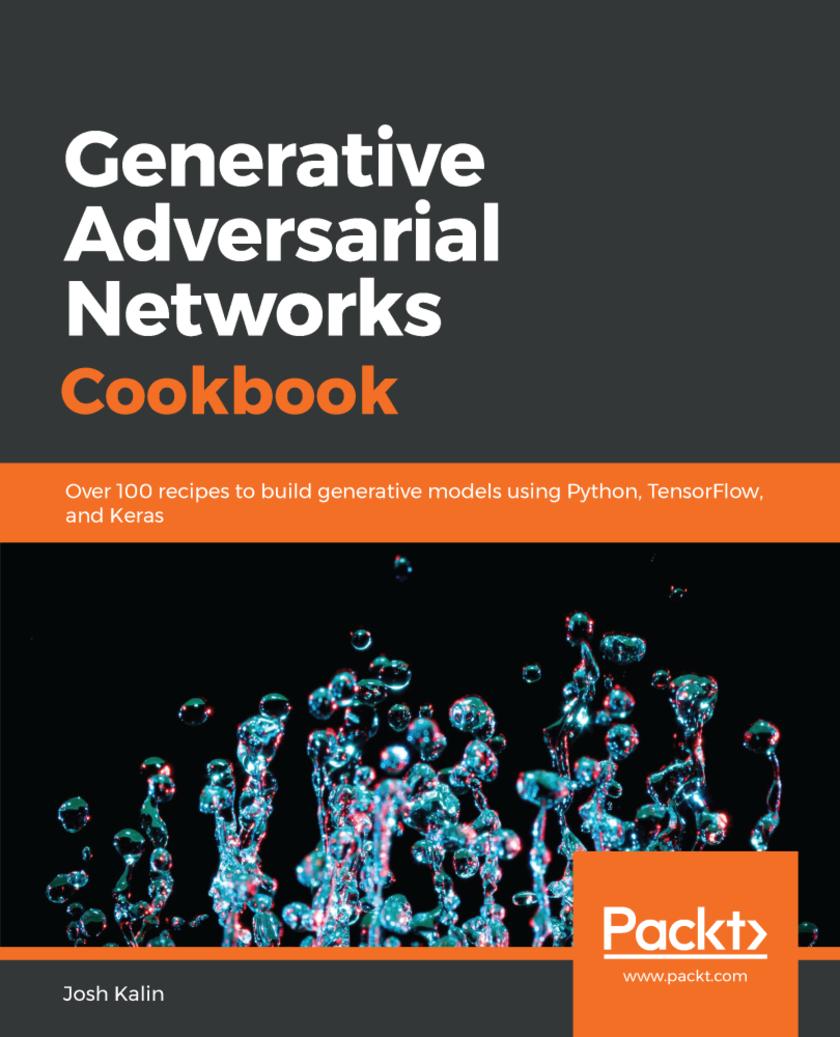
Generative Adversarial Networks Cookbook
¥81.74
Simplify next-generation deep learning by implementing powerful generative models using Python, TensorFlow and Keras Key Features *Understand the common architecture of different types of GANs *Train, optimize, and deploy GAN applications using TensorFlow and Keras *Build generative models with real-world data sets, including 2D and 3D data Book Description Developing Generative Adversarial Networks (GANs) is a complex task, and it is often hard to find code that is easy to understand. This book leads you through eight different examples of modern GAN implementations, including CycleGAN, simGAN, DCGAN, and 2D image to 3D model generation. Each chapter contains useful recipes to build on a common architecture in Python, TensorFlow and Keras to explore increasingly difficult GAN architectures in an easy-to-read format. The book starts by covering the different types of GAN architecture to help you understand how the model works. This book also contains intuitive recipes to help you work with use cases involving DCGAN, Pix2Pix, and so on. To understand these complex applications, you will take different real-world data sets and put them to use. By the end of this book, you will be equipped to deal with the challenges and issues that you may face while working with GAN models, thanks to easy-to-follow code solutions that you can implement right away. What you will learn *Structure a GAN architecture in pseudocode *Understand the common architecture for each of the GAN models you will build *Implement different GAN architectures in TensorFlow and Keras *Use different datasets to enable neural network functionality in GAN models *Combine different GAN models and learn how to fine-tune them *Produce a model that can take 2D images and produce 3D models *Develop a GAN to do style transfer with Pix2Pix Who this book is for This book is for data scientists, machine learning developers, and deep learning practitioners looking for a quick reference to tackle challenges and tasks in the GAN domain. Familiarity with machine learning concepts and working knowledge of Python programming language will help you get the most out of the book.
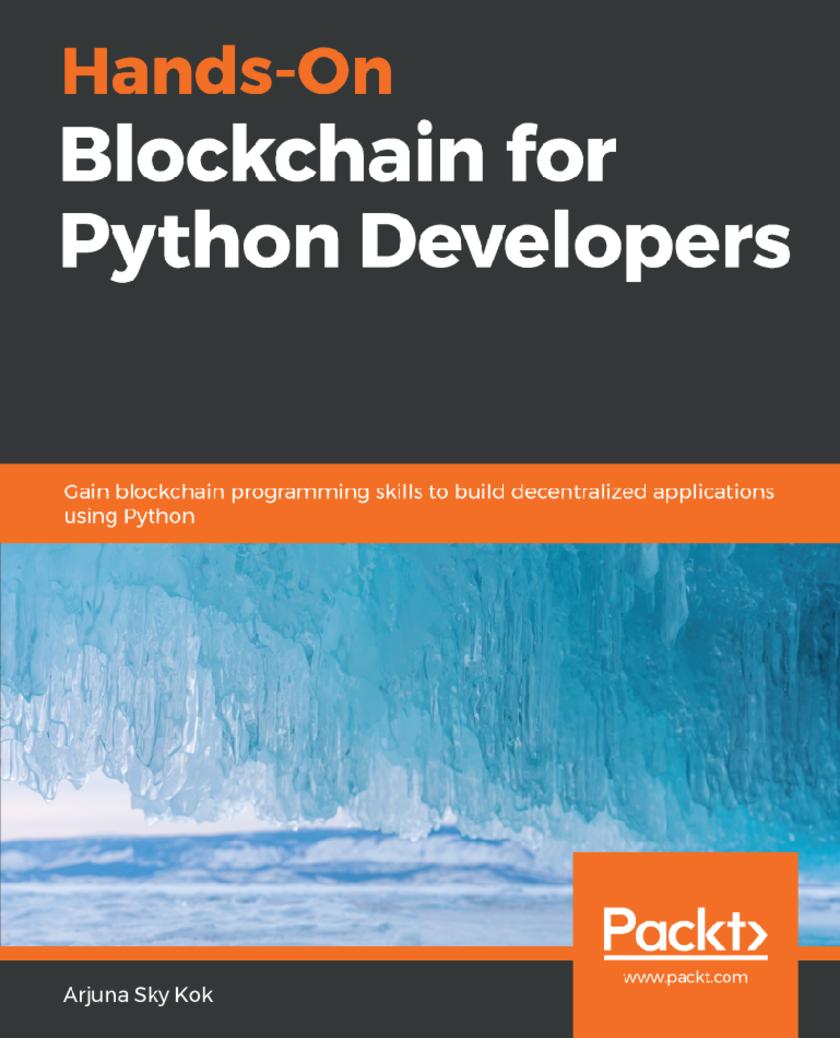
Hands-On Blockchain for Python Developers
¥81.74
Implement real-world decentralized applications using Python, Vyper, Populus, and Ethereum Key Features * Stay up-to-date with everything you need to know about the blockchain ecosystem * Implement smart contracts, wallets, and decentralized applications(DApps) using Python libraries * Get deeper insights into storing content in a distributed storage platform Book Description Blockchain is seen as the main technological solution that works as a public ledger for all cryptocurrency transactions. This book serves as a practical guide to developing a full-fledged decentralized application with Python to interact with the various building blocks of blockchain applications. Hands-On Blockchain for Python Developers starts by demonstrating how blockchain technology and cryptocurrency hashing works. You will understand the fundamentals and benefits of smart contracts such as censorship resistance and transaction accuracy. As you steadily progress, you'll go on to build smart contracts using Vyper, which has a similar syntax to Python. This experience will further help you unravel the other benefits of smart contracts, including reliable storage and backup, and efficiency. You'll also use web3.py to interact with smart contracts and leverage the power of both the web3.py and Populus framework to build decentralized applications that offer security and seamless integration with cryptocurrencies. As you explore later chapters, you'll learn how to create your own token on top of Ethereum and build a cryptocurrency wallet graphical user interface (GUI) that can handle Ethereum and Ethereum Request for Comments (ERC-20) tokens using the PySide2 library. This will enable users to seamlessly store, send, and receive digital money. Toward the end, you'll implement InterPlanetary File System (IPFS) technology in your decentralized application to provide a peer-to-peer filesystem that can store and expose media. By the end of this book, you'll be well-versed in blockchain programming and be able to build end-to-end decentralized applications on a range of domains using Python. What you will learn * Understand blockchain technology and what makes it an immutable database * Use the features of web3.py API to interact with the smart contract * Create your own cryptocurrency and token in Ethereum using Vyper * Use IPFS features to store content on the decentralized storage platform * Implement a Twitter-like decentralized application with a desktop frontend * Build decentralized applications in the shape of console, web, and desktop applications Who this book is for If you are a Python developer who wants to enter the world of blockchain, Hands-On Blockchain for Python Developers is for you. The book will be your go-to guide to becoming well-versed with the blockchain ecosystem and building your own decentralized applications using Python and library support.
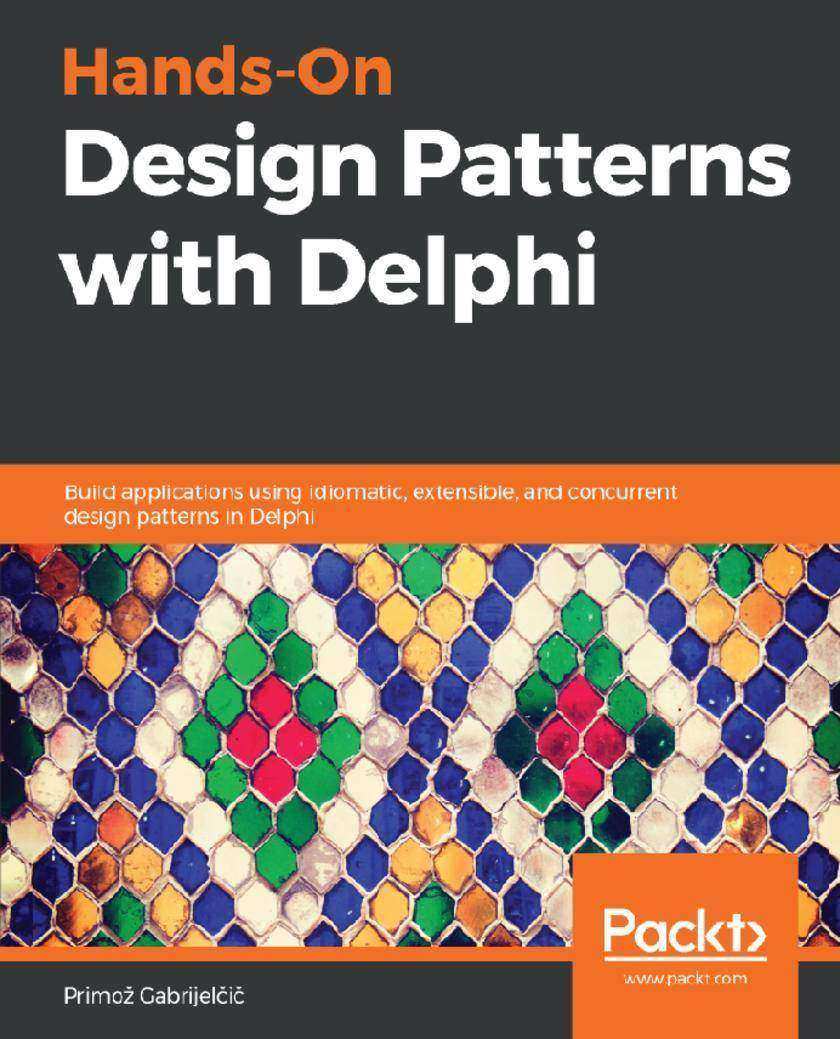
Hands-On Design Patterns with Delphi
¥81.74
Get up to speed with creational, structural, behavioral and concurrent patterns in Delphi to write clear, concise and effective code Key Features * Delve into the core patterns and components of Delphi in order to master your application's design * Brush up on tricks, techniques, and best practices to solve common design and architectural challenges * Choose the right patterns to improve your program’s efficiency and productivity Book Description Design patterns have proven to be the go-to solution for many common programming scenarios. This book focuses on design patterns applied to the Delphi language. The book will provide you with insights into the language and its capabilities of a runtime library. You'll start by exploring a variety of design patterns and understanding them through real-world examples. This will entail a short explanation of the concept of design patterns and the original set of the 'Gang of Four' patterns, which will help you in structuring your designs efficiently. Next, you'll cover the most important 'anti-patterns' (essentially bad software development practices) to aid you in steering clear of problems during programming. You'll then learn about the eight most important patterns for each creational, structural, and behavioral type. After this, you'll be introduced to the concept of 'concurrency' patterns, which are design patterns specifically related to multithreading and parallel computation. These will enable you to develop and improve an interface between items and harmonize shared memories within threads. Toward the concluding chapters, you'll explore design patterns specific to program design and other categories of patterns that do not fall under the 'design' umbrella. By the end of this book, you'll be able to address common design problems encountered while developing applications and feel confident while building scalable projects. What you will learn * Gain insights into the concept of design patterns * Study modern programming techniques with Delphi * Keep up to date with the latest additions and program design techniques in Delphi * Get to grips with various modern multithreading approaches * Discover creational, structural, behavioral, and concurrent patterns * Determine how to break a design problem down into its component parts Who this book is for Hands-On Design Patterns with Delphi is aimed at beginner-level Delphi developers who want to build scalable and robust applications. Basic knowledge of Delphi is a must.
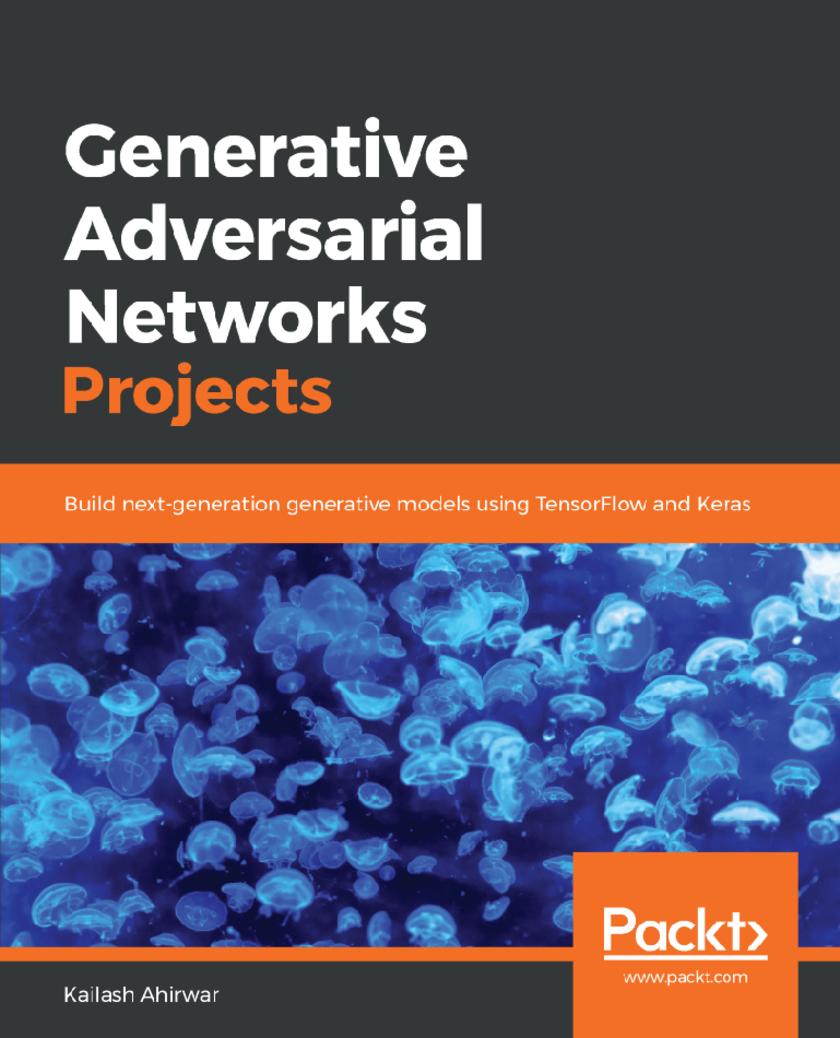
Generative Adversarial Networks Projects
¥81.74
Explore various Generative Adversarial Network architectures using the Python ecosystem Key Features * Use different datasets to build advanced projects in the Generative Adversarial Network domain * Implement projects ranging from generating 3D shapes to a face aging application * Explore the power of GANs to contribute in open source research and projects Book Description Generative Adversarial Networks (GANs) have the potential to build next-generation models, as they can mimic any distribution of data. Major research and development work is being undertaken in this field since it is one of the rapidly growing areas of machine learning. This book will test unsupervised techniques for training neural networks as you build seven end-to-end projects in the GAN domain. Generative Adversarial Network Projects begins by covering the concepts, tools, and libraries that you will use to build efficient projects. You will also use a variety of datasets for the different projects covered in the book. The level of complexity of the operations required increases with every chapter, helping you get to grips with using GANs. You will cover popular approaches such as 3D-GAN, DCGAN, StackGAN, and CycleGAN, and you’ll gain an understanding of the architecture and functioning of generative models through their practical implementation. By the end of this book, you will be ready to build, train, and optimize your own end-to-end GAN models at work or in your own projects. What you will learn * Train a network on the 3D ShapeNet dataset to generate realistic shapes * Generate anime characters using the Keras implementation of DCGAN * Implement an SRGAN network to generate high-resolution images * Train Age-cGAN on Wiki-Cropped images to improve face verification * Use Conditional GANs for image-to-image translation * Understand the generator and discriminator implementations of StackGAN in Keras Who this book is for If you’re a data scientist, machine learning developer, deep learning practitioner, or AI enthusiast looking for a project guide to test your knowledge and expertise in building real-world GANs models, this book is for you.
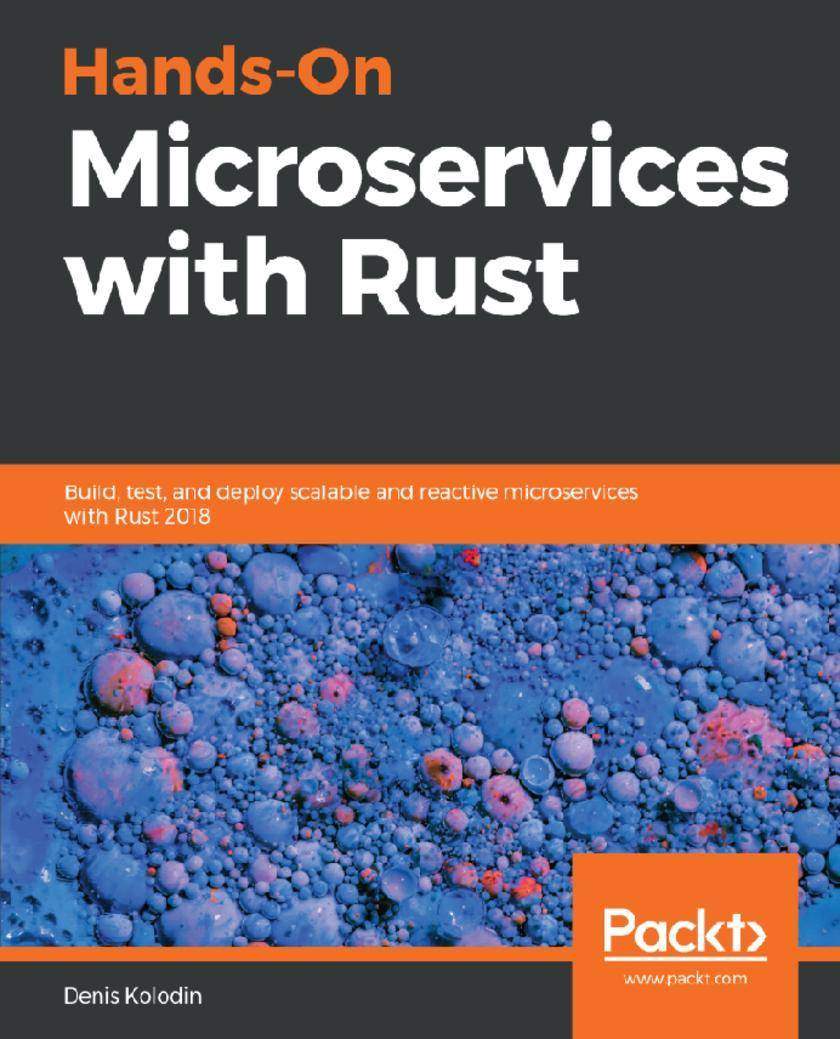
Hands-On Microservices with Rust
¥81.74
A comprehensive guide in developing and deploying high performance microservices with Rust Key Features * Start your microservices journey and get a broader perspective on microservices development using RUST 2018, * Build, deploy, and test microservices using AWS * Explore advanced techniques for developing microservices such as actor model, Requests Routing, and threads Book Description Microservice architecture is sweeping the world as the de facto pattern for building web-based applications. Rust is a language particularly well-suited for building microservices. It is a new system programming language that offers a practical and safe alternative to C. This book describes web development using the Rust programming language and will get you up and running with modern web frameworks and crates with examples of RESTful microservices creation. You will deep dive into Reactive programming, and asynchronous programming, and split your web application into a set of concurrent actors. The book provides several HTTP-handling examples with manageable memory allocations. You will walk through stateless high-performance microservices, which are ideally suitable for computation or caching tasks, and look at stateful microservices, which are filled with persistent data and database interactions. As we move along, you will learn how to use Rust macros to describe business or protocol entities of our application and compile them into native structs, which will be performed at full speed with the help of the server's CPU. Finally, you will be taken through examples of how to test and debug microservices and pack them into a tiny monolithic binary or put them into a container and deploy them to modern cloud platforms such as AWS. What you will learn * Get acquainted with leveraging Rust web programming * Get to grips with various Rust crates, such as hyper, Tokio, and Actix * Explore RESTful microservices with Rust * Understand how to pack Rust code to a container using Docker * Familiarize yourself with Reactive microservices * Deploy your microservices to modern cloud platforms such as AWS Who this book is for This book is for developers who have basic knowledge of RUST, and want to learn how to build, test, scale, and manage RUST microservices. No prior experience of writing microservices in RUST is assumed.
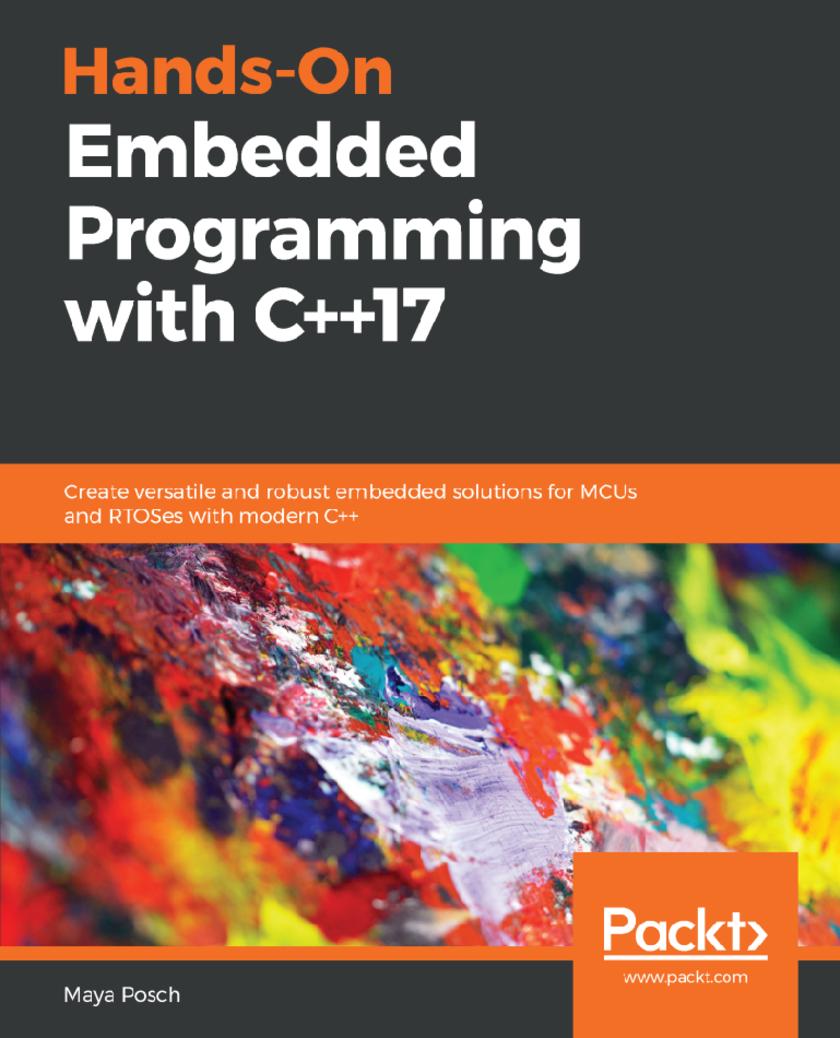
Hands-On Embedded Programming with C++17
¥81.74
Build safety-critical and memory-safe stand-alone and networked embedded systems Key Features * Know how C++ works and compares to other languages used for embedded development * Create advanced GUIs for embedded devices to design an attractive and functional UI * Integrate proven strategies into your design for optimum hardware performance Book Description C++ is a great choice for embedded development, most notably, because it does not add any bloat, extends maintainability, and offers many advantages over different programming languages. Hands-On Embedded Programming with C++17 will show you how C++ can be used to build robust and concurrent systems that leverage the available hardware resources. Starting with a primer on embedded programming and the latest features of C++17, the book takes you through various facets of good programming. You’ll learn how to use the concurrency, memory management, and functional programming features of C++ to build embedded systems. You will understand how to integrate your systems with external peripherals and efficient ways of working with drivers. This book will also guide you in testing and optimizing code for better performance and implementing useful design patterns. As an additional benefit, you will see how to work with Qt, the popular GUI library used for building embedded systems. By the end of the book, you will have gained the confidence to use C++ for embedded programming. What you will learn * Choose the correct type of embedded platform to use for a project * Develop drivers for OS-based embedded systems * Use concurrency and memory management with various microcontroller units (MCUs) * Debug and test cross-platform code with Linux * Implement an infotainment system using a Linux-based single board computer * Extend an existing embedded system with a Qt-based GUI * Communicate with the FPGA side of a hybrid FPGA/SoC system Who this book is for If you want to start developing effective embedded programs in C++, then this book is for you. Good knowledge of C++ language constructs is required to understand the topics covered in the book. No knowledge of embedded systems is assumed.
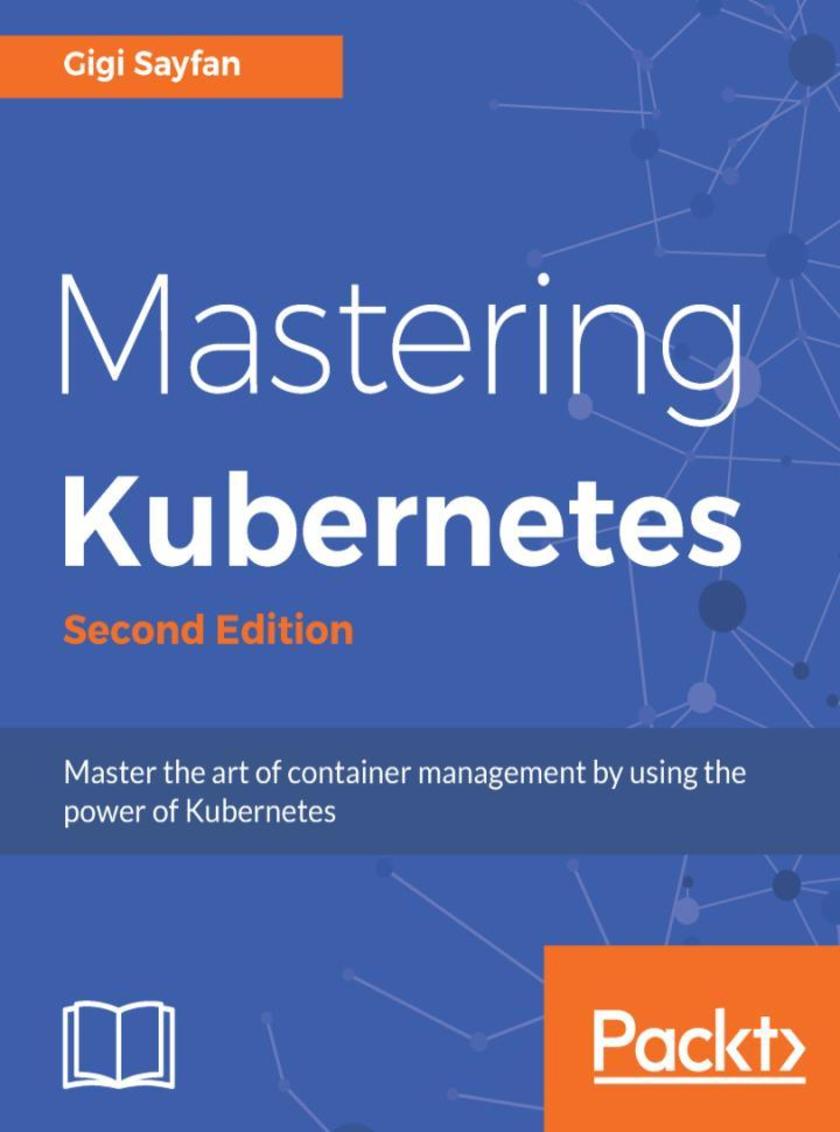
Mastering Kubernetes
¥81.74
Exploit design, deployment, and management of large-scale containers About This Book ? Explore the latest features available in Kubernetes 1.10 ? Ensure that your clusters are always available, scalable, and up to date ? Master the skills of designing and deploying large clusters on various cloud platforms Who This Book Is For Mastering Kubernetes is for you if you are a system administrator or a developer who has an intermediate understanding of Kubernetes and wish to master its advanced features. Basic knowledge of networking would also be helpful. In all, this advanced-level book provides a smooth pathway to mastering Kubernetes. What You Will Learn ? Architect a robust Kubernetes cluster for long-time operation ? Discover the advantages of running Kubernetes on GCE, AWS, Azure, and bare metal ? Understand the identity model of Kubernetes, along with the options for cluster federation ? Monitor and troubleshoot Kubernetes clusters and run a highly available Kubernetes ? Create and configure custom Kubernetes resources and use third-party resources in your automation workflows ? Enjoy the art of running complex stateful applications in your container environment ? Deliver applications as standard packages In Detail Kubernetes is an open source system that is used to automate the deployment, scaling, and management of containerized applications. If you are running more containers or want automated management of your containers, you need Kubernetes at your disposal. To put things into perspective, Mastering Kubernetes walks you through the advanced management of Kubernetes clusters. To start with, you will learn the fundamentals of both Kubernetes architecture and Kubernetes design in detail. You will discover how to run complex stateful microservices on Kubernetes including advanced features such as horizontal pod autoscaling, rolling updates, resource quotas, and persistent storage backend. Using real-world use cases, you will explore the options for network configuration, and understand how to set up, operate, and troubleshoot various Kubernetes networking plugins. In addition to this, you will get to grips with custom resource development and utilization in automation and maintenance workflows. To scale up your knowledge of Kubernetes, you will encounter some additional concepts based on the Kubernetes 1.10 release, such as Promethus, Role-based access control, API aggregation, and more. By the end of this book, you’ll know everything you need to graduate from intermediate to advanced level of understanding Kubernetes. Style and approach Delving into the design of the Kubernetes platform, the reader will be exposed to Kubernetes advanced features and best practices. This advanced-level book will provide a pathway to mastering Kubernetes.
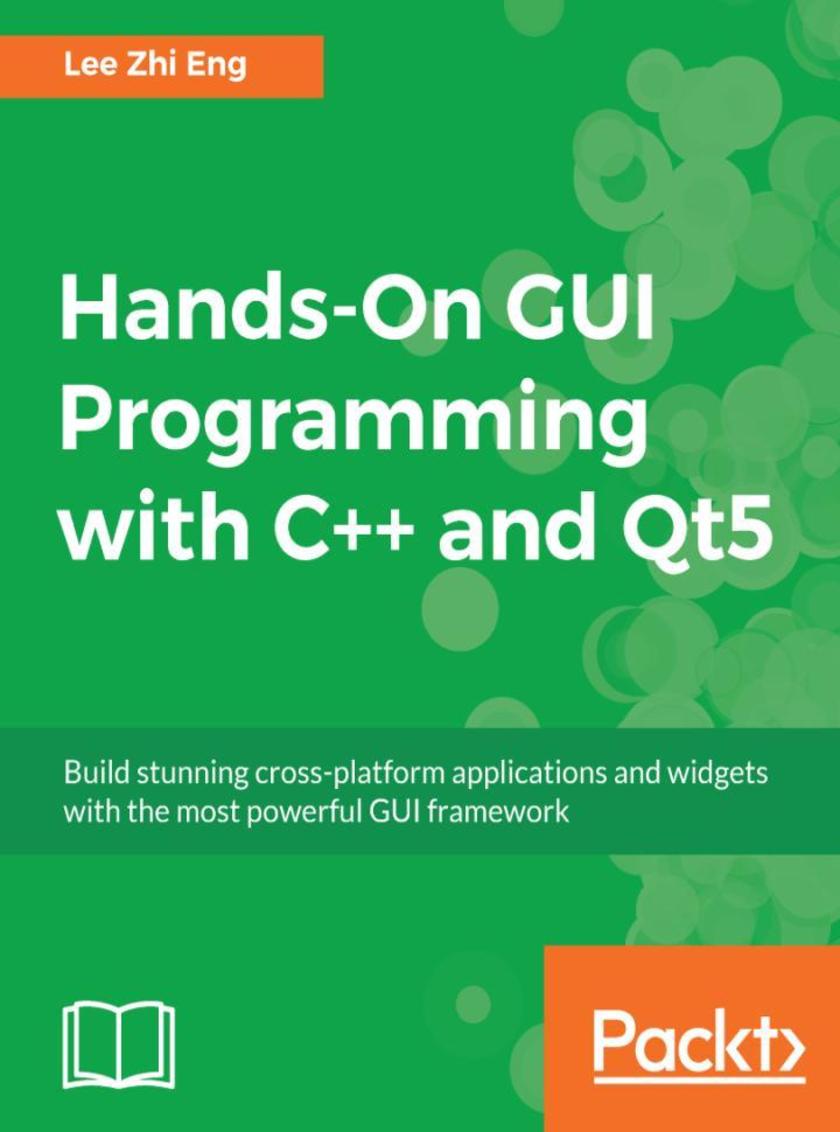
Hands-On GUI Programming with C++ and Qt5
¥81.74
Create visually appealing and feature-rich applications by using Qt 5 and the C++ language About This Book ? Explore Qt 5’s powerful features to easily design your GUI application ? Leverage Qt 5 to build attractive cross-platform applications ? Work with Qt modules for multimedia, networking, and location, to customize your Qt applications Who This Book Is For This book will appeal to developers and programmers who would like to build GUI-based applications. Basic knowledge of C++ is necessary and the basics of Qt would be helpful. What You Will Learn ? Implement tools provided by Qt 5 to design a beautiful GUI ? Understand different types of graphs and charts supported by Qt 5 ? Create a web browser using the Qt 5 WebEngine module and web view widget ? Connect to the MySQL database and display data obtained from it onto the Qt 5 GUI ? Incorporate the Qt 5 multimedia and networking module in your application ? Develop Google Map-like applications using Qt 5’s location module ? Discover cross-platform development by exporting the Qt 5 application to different platforms ? Uncover the secrets behind debugging Qt 5 and C++ applications In Detail Qt 5, the latest version of Qt, enables you to develop applications with complex user interfaces for multiple targets. It provides you with faster and smarter ways to create modern UIs and applications for multiple platforms. This book will teach you to design and build graphical user interfaces that are functional, appealing, and user-friendly. In the initial part of the book, you will learn what Qt 5 is and what you can do with it. You will explore the Qt Designer, discover the different types of widgets generally used in Qt 5, and then connect your application to the database to perform dynamic operations. Next, you will be introduced to Qt 5 chart which allows you to easily render different types of graphs and charts and incorporate List View Widgets in your application. You will also work with various Qt modules, like QtLocation, QtWebEngine, and the networking module through the course of the book. Finally, we will focus on cross-platform development with QT 5 that enables you to code once and run it everywhere, including mobile platforms. By the end of this book, you will have successfully learned about high-end GUI applications and will be capable of building many more powerful, cross-platform applications. Style and approach This is a comprehensive guide that explores the essential Qt features and implement them in building real-world cross-platform GUI applications
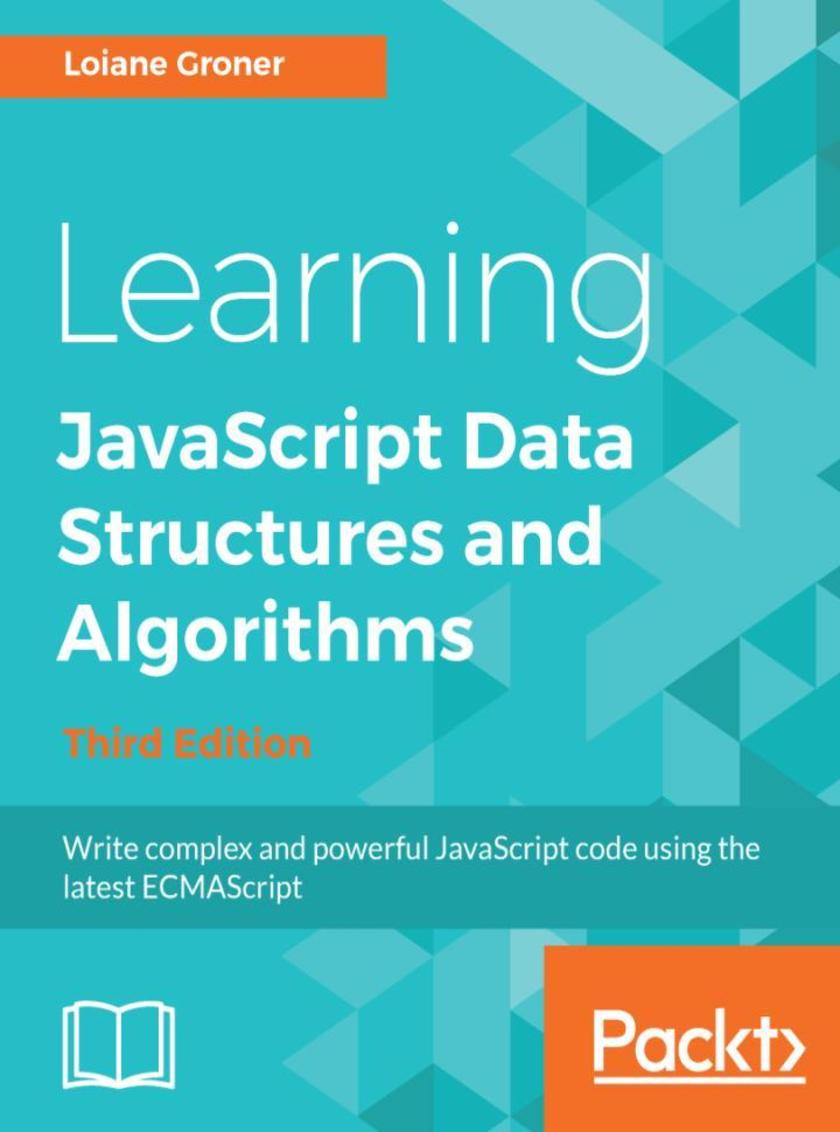
Learning JavaScript Data Structures and Algorithms
¥81.74
Create classic data structures and algorithms such as depth-first search and breadth-first search, learn recursion, as well as create and use a heap data structure using JavaScript About This Book ? Implement common data structures and the associated algorithms along with the context in which they are used ? Master existing JavaScript data structures such as arrays, sets, and maps, and learn how to implement new ones such as stacks, linked lists, trees, and graphs in ES 8 ? Develop abstract data types to make JavaScript a more flexible and powerful programming language Who This Book Is For If you’re a JavaScript developer who wants to dive deep into JavaScript and write complex programs using JavaScript data structures and algorithms, this book is for you. What You Will Learn ? Declare, initialize, add, and remove items from arrays, stacks, and queues ? Create and use linked lists, doubly linked lists, and circular linked lists ? Store unique elements with hash tables, dictionaries, and sets ? Explore the use of binary trees and binary search trees ? Sort data structures using algorithms such as bubble sort, selection sort, insertion sort, merge sort, and quick sort ? Search elements in data structures using sequential sort and binary search In Detail A data structure is a particular way of organizing data in a computer to utilize resources efficiently. Data structures and algorithms are the base of every solution to any programming problem. With this book, you will learn to write complex and powerful code using the latest ES 2017 features. Learning JavaScript Data Structures and Algorithms begins by covering the basics of JavaScript and introduces you to ECMAScript 2017, before gradually moving on to the most important data structures such as arrays, queues, stacks, and linked lists. You will gain in-depth knowledge of how hash tables and set data structures function as well as how trees and hash maps can be used to search files in an HD or represent a database. This book serves as a route to take you deeper into JavaScript. You’ll also get a greater understanding of why and how graphs, one of the most complex data structures, are largely used in GPS navigation systems in social networks. Toward the end of the book, you’ll discover how all the theories presented in this book can be applied to solve real-world problems while working on your own computer networks and Facebook searches. Style and approach Easy to follow guide which will cover the most used data structures and sorting/searching algorithms known in the computer science world along with examples to help the readers understand each chapter thoroughly.
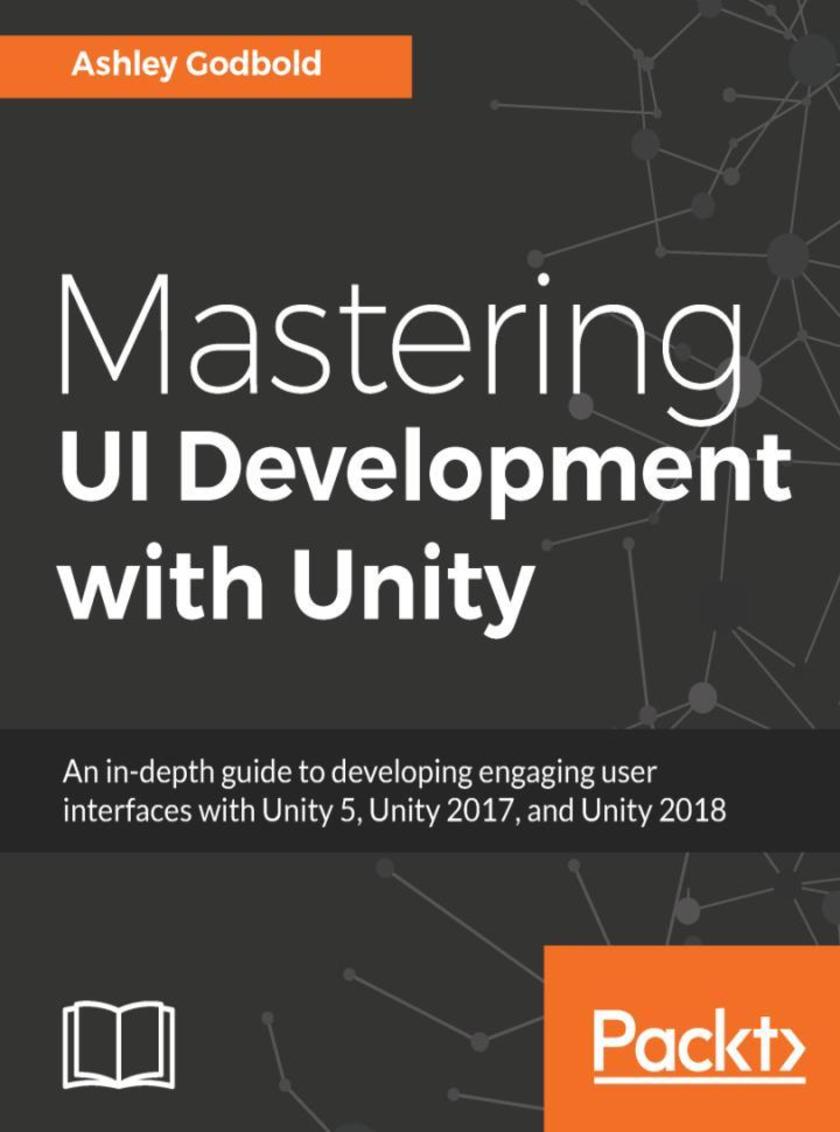
Mastering UI Development with Unity
¥81.74
Master Game UI system by creating captivating user interface components with Unity 5 through Unity 2018 and C#. Learn about UI texts, images, world space UI, mobile-specific UI and much more. About This Book ? Develop a game UI with both technical and aesthetic considerations ? Use all the UI elements provided by Unity's UI system ? Step-by-step examples of creating user interface components in the top game genres Who This Book Is For This book is for anyone keen to improve their games via a great user interface with Unity's UI system. If you're looking for a book that explains how to develop specific user interfaces or that thoroughly explains how each of the individual Unity components work, this book is for you. What You Will Learn ? Design principles and patterns for laying out elements in your UI ? Techniques that allow your UI to scale appropriately in different resolutions ? How to use automatic layouts to streamline your UI building process ? Properties of the Event System and how to appropriately hook events to your UI elements ? Access the components and properties of UI elements via code ? Implement all of Unity's built-in UI elements as well as those provided by TextMeshPro ? Develop key UI components that are popularly used in multiple game genres ? Add visual flare to user interfaces with the use of animation and particle effects ? Create a UI that displays in the Screen Space as well as World Space In Detail A functional UI is an important component for player interaction in every type of video game. Along with imparting crucial statistical information to the player, the UI is also the window through which the player engages with the world established by the game. Unity's tools give you the opportunity to create complex and attractive UIs to make your game stand out. This book helps you realize the full potential of Unity's powerful tools to create the best UI for your games by walking you through the creation of myriad user interface components. Learn how to create visually engaging heads-up-displays, pause menus, health bars, circular progress bars, animated menus, and more. This book not only teaches how to lay out visual elements, but also how to program these features and implement them across multiple games of varying genres. While working through the examples provided, you will learn how to develop a UI that scales to multiple screen resolutions, so your game can be released on multiple platforms with minimal changes. Style and approach The book walks you through the process of creating many different user interface components, by describing each UI component and property thoroughly and then providing step-by-step examples of its implementation. You will not only learn how to lay out visual elements, but you will also learn how to program for these features and hook them in to your game. The examples provided in the book can be reused for many other products.
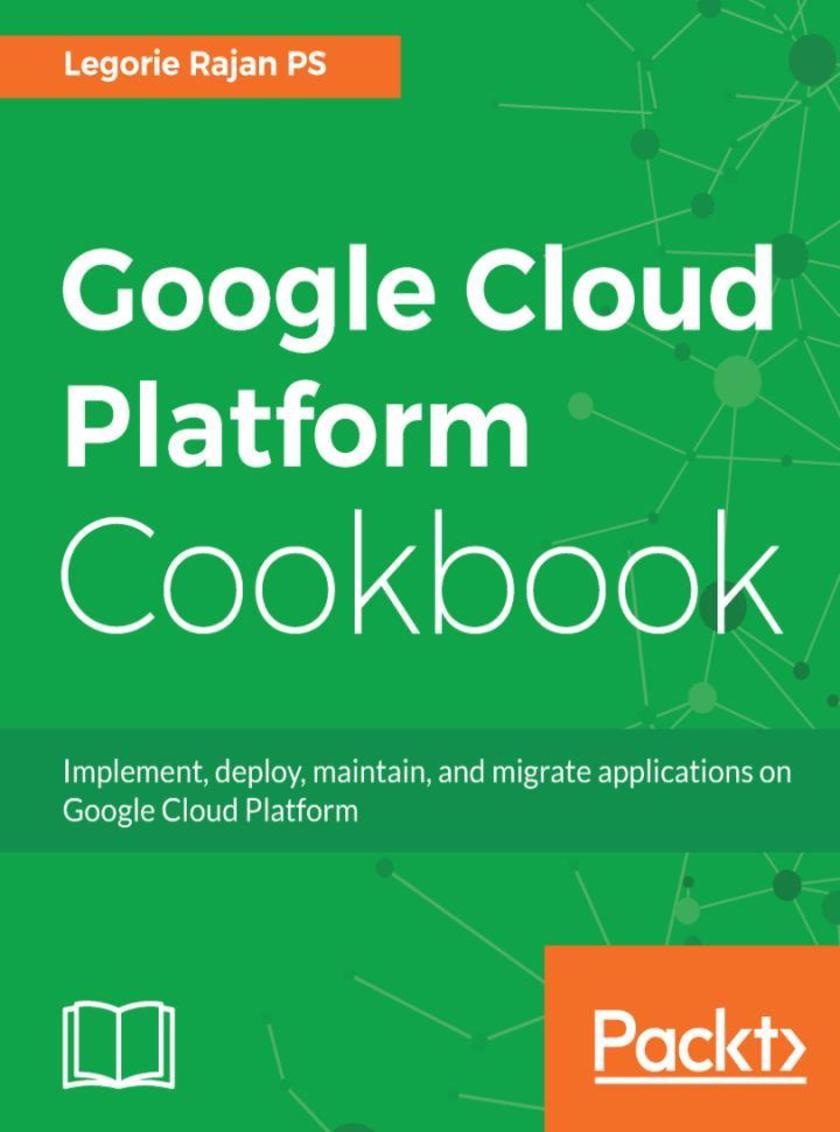
Google Cloud Platform Cookbook
¥81.74
Practical recipes to implement cost-effective and scalable cloud solutions for your organization About This Book ? Implement Google Cloud services in your organization ? Leverage Google Cloud components to secure your organization’s data ? A recipe-based guide that promises hands-on experience in deploying a highly scalable and available environment Who This Book Is For This book is for IT professionals, engineers, and developers looking at implementing Google Cloud in their organizations. Administrators and architects planning to make their organization more efficient with Google Cloud will also find this book useful. Basic understanding of Cloud services and the Google Cloud platform is necessary. What You Will Learn ? Host a Python application on Google Compute Engine ? Host an application using Google Cloud Functions ? Migrate a MySQL DB to Cloud Spanner ? Configure a network for a highly available application on GCP ? Learn simple image processing using Storage and Cloud Functions ? Automate security checks using Policy Scanner ? Understand tools for monitoring a production environment in GCP ? Learn to manage multiple projects using service accounts In Detail Google Cloud Platform is a cloud computing platform that offers products and services to host applications using state-of-the art infrastructure and technology. You can build and host applications and websites, store data, and analyze data on Google's scalable infrastructure. This book follows a recipe-based approach, giving you hands-on experience to make the most of Google Cloud services. This book starts with practical recipes that explain how to utilize Google Cloud's common services. Then, you'll see how to make full use of Google Cloud components such as networking, security, management, and developer tools. Next, we'll deep dive into implementing core Google Cloud services into your organization, with practical recipes on App Engine, Compute Engine microservices with Cloud Functions, virtual networks, and Cloud Storage. Later, we'll provide recipes on implementing authentication and security, Cloud APIs, command-line management, deployment management, and the Cloud SDK. Finally, we'll cover administration troubleshooting tasks with the Compute and Container Engines and we'll show how to monitor your organization's efficiency with best practices. By the end of this book, you'll have a complete understanding of how to implement Google Cloud services in your organization with ease. Style and approach This book will quickly get you started with using Google Cloud Services.




 购物车
购物车 个人中心
个人中心



